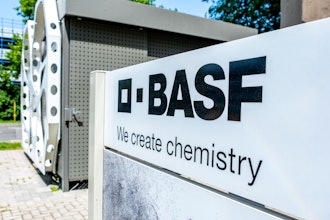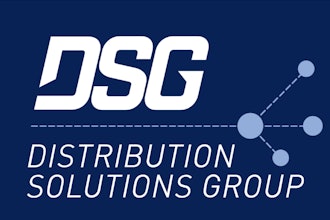
Many legitimate motivations can drive a distributor to end a supplier relationship. Often, these reasons relate to the supplier’s failure to meet their contractual obligations, whether it involves products that are defective and don’t meet agreed-upon specifications, consistent failures to meet critical delivery deadlines, violations of exclusivity or territory provisions, or other breaches. Other times, a supplier may comply to the letter with a distribution agreement, but the arrangement may no longer align with the distributor’s strategic goals or become otherwise detrimental.
Regardless of the “why” of a distributor-supplier relationship break-up, how the distributor goes about the process of terminating their agreement can play an outsized role in whether the parties go their separate ways with minimal acrimony or whether things devolve into costly, disruptive and protracted litigation. Here are seven issues to consider and address in order to mitigate the risks involved when terminating a distribution agreement.
1. When Ending a Contract, Start with the Contract
Every distribution agreement contains language and provisions relating to termination, from reasons that would justify ending the relationship to cure periods to notice requirements to what happens to inventory and market access post-termination. Failure to adhere to the agreement’s termination terms is perhaps the most significant and straightforward (and avoidable) risk a distributor faces when ending their supplier relationship. Depending on the contract’s damages provisions, a supplier’s breach of contract claim for wrongful termination of the agreement presents significant exposure to the supplier’s lost profits, reputational harm or consequential damages.
Distributors should therefore consult with counsel who can help ensure that any termination complies with the agreement’s terms.
2. Contractual Compliance May Not Excuse Bad Faith Termination
Given the length and detail of most distribution agreements, it would be understandable to believe that all of the parties’ respective rights and obligations are addressed in the document. But in many, if not most, jurisdictions, the law imposes implied duties of good faith and fair dealing on the parties to a contract that can expose a distributor to liability if they are found to have acted in bad faith when terminating their agreement, even without a specific violation of its express terms.
Distributors should therefore be able to point to legitimate business justifications for termination, even when they have otherwise complied with the agreement. They should maintain clear and consistent documentation of the supplier’s performance throughout the business relationship. If termination is based on underperformance, breach or failure to deliver quality goods or services, having a well-organized record of correspondence, complaints, delivery issues or quality concerns can serve as valuable evidence in the event of a dispute.
3. Who Gets Stuck Holding the Inventory Bag?
One of the key aspects of a well-crafted termination provision is addressing what happens to unsold inventory in the distributor’s possession. Unfortunately, some agreements often do not require the supplier to repurchase products, especially if the products are outdated, seasonal or customized. If the distributor cannot return the goods or resell them due to exclusive distribution rights or brand licensing restrictions, it may be stuck holding a burdensome bag.
As such, the timing of any termination should consider not only any required notice, but also what, if anything, the agreement provides regarding unsold inventory. In the best case, the contract will include repurchase provisions that require the supplier to take back the goods so the distributor can avoid writing off any unsalable inventory as a loss.
4. Territorial Disputes and Market Reentry Issues
Some distribution agreements provide for exclusive territorial rights. If a distributor terminates the agreement prematurely or unjustifiably, conflict and litigation may ensue if the supplier attempts to immediately reenter the market or appoint a new distributor.
In countries with strong distributor protections (such as many EU nations and certain Latin American jurisdictions), the law may recognize quasi-franchise or agency-like relationships and limit a supplier’s ability to abruptly reassign or reclaim market rights.
5. Safeguarding Confidential and Proprietary Information
Many distribution agreements involve the sharing of sensitive business information, such as pricing structures, marketing strategies, customer lists or trade secrets. Upon termination, distributors must ensure that each party follows all contractual obligations concerning confidentiality and data protection.
In some cases, distributors may need to return or destroy supplier-owned materials or confirm that they have deleted any such proprietary data. Likewise, if the supplier has access to distributor systems or customer data, the distributor must take appropriate measures to revoke access and prevent misuse.
6. Avoiding Infringement of Supplier’s Intellectual Property (IP) Rights
Distributors frequently use the supplier’s trademarks, logos, and trade dress in marketing, packaging and promotional materials. Once the agreement is terminated, the distributor must cease using these marks to avoid trademark infringement. This includes removing branding from websites, business cards, signage and advertising. It also involves returning or destroying any marketing materials that contain the supplier’s branded IP, such as brochures, banners, displays and digital files.
7. Post-Termination Indemnification
Indemnification clauses in such agreements typically require one party to compensate the other for certain losses or damages. Upon termination, disputes may arise regarding the scope and duration of indemnification obligations and whether the distributor remains responsible for past liabilities or if the supplier must indemnify the distributor for harm resulting from the agreement’s termination.
One common issue involves indemnification for product liability claims. If the distributor sold goods manufactured by the supplier, customers may still bring claims after the agreement ends. A distributor may seek ongoing indemnification from the supplier for such claims, especially if they arise from defective products or misleading warranties created by the supplier.
Distributors should ensure the indemnification clauses in their supplier agreements include survival provisions and clearly assign responsibility for third-party claims, legal costs and liabilities relating to pre-termination conduct that arise post-termination.
Terminating a distribution agreement and breaking up with a supplier is a consequential business decision and one that should be made with thoughtfulness, foresight and the advice of experienced counsel.
If you have questions or concerns relating to terminating a distribution agreement, please contact me at 312-840-7004 or [email protected].
The information contained in this article is provided for informational purposes only, and should not be construed as legal advice on any subject matter. The author expressly disclaims all liability in respect to actions taken or not taken based on any or all the contents of this article.























